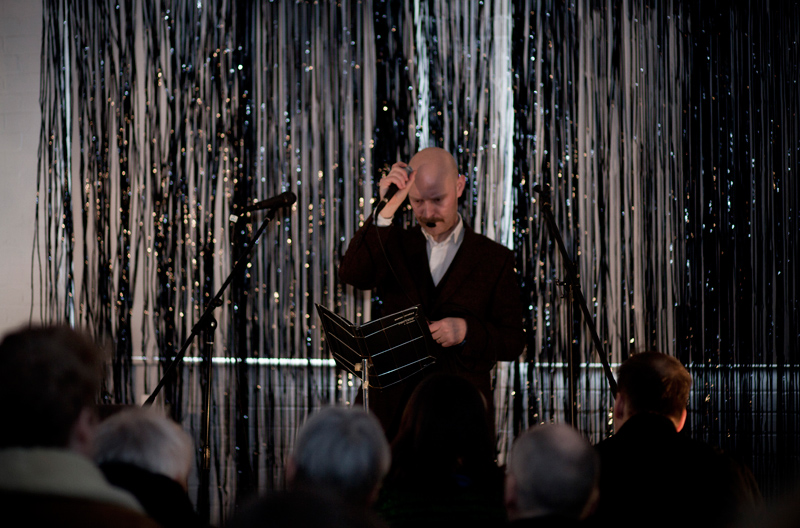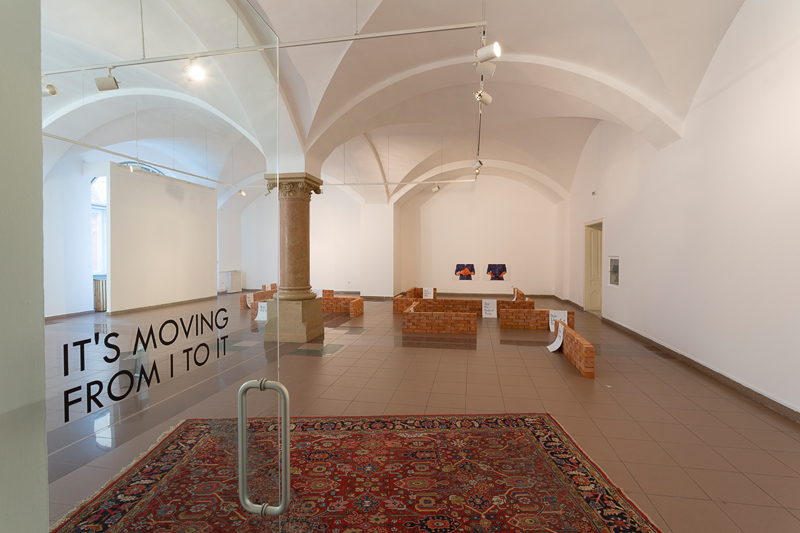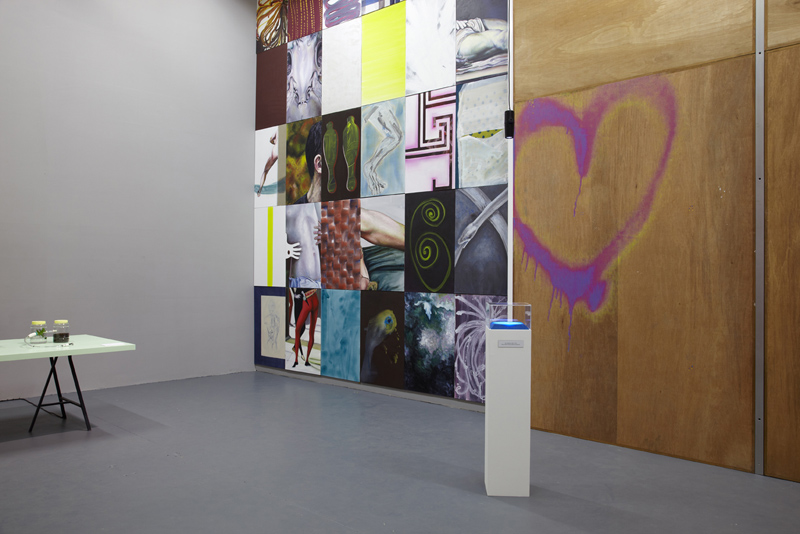
Writing from the perspective of the amateur who perceives his practice as the only thing he has – not the theory behind it, not the label on top of it, not the object at the end of it – why was I drawn to Formcontent? Because being a spectator at their four events at the David Roberts Art Foundation, titled The School, helped me formulate this position of the amateur. I am not using this word to tag Formcontent. Rather, I am placing myself under its cover to better analyze work that proposes new positions – artistic, aesthetic, “political” – that in turn inspire a new reception of art.
When we met, the question on my lips was burning: have you actually sensed this movement from I to it? What is it then? Why is everyone talking about it, why do we now preach Speculative Realism, what can I do to think as an object if this is what is required of me now? What is thinking a world without thought, as Ray Brassier puts it?
“There is no distinction between I and it. Any research is already a product”, Pieternel told me over the table. “I” and “it” are taken together in the movement.
We are not discussing a shift, but a process. A re-arranging. A creation of a personal language, intended in order to position the collective, however subjectively, in the art world.
At first taken aback, I had to inquire further into this expression. It couldn’t have just been a coincidence. Besides, art historian Michael Newman had given a talk as part of the group’s program at DRAF, in which he had discussed this movement from I to it as a programmatic one in contemporary art, fuelled by the turn towards social practice.
Pieternel again: “It came out as the title because of the frustration with the division of things. Our way of thinking became production, and our production became a way of reflecting.” Indeed, this was obvious in the program – in fact it was its core. It’s moving from I to It started as a set of abstract characters – the Becoming Subject, the Host, the Portable Object, a Tiger, the Stranger – that the three curators invited artists and writers to take up in whichever medium they chose. Their task was to produce something as close to a play as they could or wanted. There are now 14 scenes to this play – pieces of text, operas, exhibitions, songs. The virtual structure of this arena replaces the worn-out gallery space the collective had run in East London for five years, before deciding to embark on their 15-month nomadic project.
During this time, the initial abstract characters have taken shape, have become – humans? Strangely, the exact opposite of what the title suggests. But the “I”, as far as Formcontent see it, means “how to relate to the idea of practice, how to create autonomous visual language.” In this case, there was an implicit “I” from the beginning in the choice of these characters, and the movement was indeed between a subjectivity and the definition of this subjectivity. Something like: naming names. As I understand it, the program was a proposition to become wrapped up in a game; one in which the characters you play define you as much as you define them.
Being a spectator at only four of their events, I can try and evoke the general atmosphere. Siôn Parkinson proposed an intriguing one-man performance of an opera he had written using the given characters. It was short but tight. He recited the story of a creature who, when in love, would suck the partner’s blood and thus kill him. He used melodramatic songs to back this up, keeping the audience in amused tension. Bloodstains kept appearing over his face and neck, in an accentuated exhibition of his story. It was funny, he was funny, and pathetic and aware of it.
Some weeks before that, art historian Michael Newman had lectured about the theoretical implications of the title, It’s moving from I to it. He discussed Blanchot, Lacan, the usual crowd. Analyzing the event with Formcontent, I understand why I had been so enthusiastic about it. Apparently, Newman had found a new freedom in lecturing in a gallery, using interpretation, presupposition and speculation – that is, not falling into academic constraints. His theoretical approach had gained from the proximity with art.

Another idea that comes to mind after overviewing the entire program is that, perhaps, things and humans have finally become equivalent.
Anca: “Curating still starts from a very subjective point, the material is your own subjectivity. The role of curating is to make something discursive, to create a relationship between subject and object.” And looking at the way in which abstract characters, artists, performances and artworks are constantly rearranged, put in relation one to the other – one gets the sense that this equivalence is the privilege of the curator. And it is for him that it is indeed moving from I to it. Artistic practice is still viewed in a traditional, subject-centered manner. It is the curator whose position is properly examined by Formcontent’s démarche. Only the curator has the vision of the entire project, the ability to juggle subjects and objects. Once he has let go of authorship, he has the opportunity to occupy a more radical position – one that Formcontent is now defining.
This starts with the emphasis on collaboration. The script is written and enacted by many people; only on one occasion is the collective properly involved in writing a scene. As curators, their “medium is different from that of the artist, but their process is similar.” This means that they are in control of their work because they build it upon a structure – because their work itself is the building of this structure. “We are the librarians of our work”, Pieternel confesses, the only ones to have witnessed all the situations that arose from their initial proposition. The website is the only other total image. This reminds me of John Cage’s massive performances, in which every spectator witnessed something different, a matter of their own chance. Only with Formcontent the scale is bigger: not one night, but almost a year. Not one room, but the entire globe. To do things for one’s own pleasure? To give because you know there’s much more where that came from? To look but never own? I like these questions because they seem appropriate for the contemporary modes of experiencing the world. Programmed chance, common authorship, and a constant avoidance (reinvention?) of tags. The new professionals of the contemporary world shed a new light on the position of the amateur: not someone who doesn’t know, but someone who enjoys experiencing more than knowing. This was the invitation that I received from Formcontent – and I said yes.
So for me the interest of Formcontent lies in their ability to stop right before they reach a definition. It’s moving from I to it, but it never really arrives anywhere. It is perhaps the value of practice over theory, this ability to move without stopping to take the shape of something. But the position Forcontent endorses is not one against theory either. Amongst the many contemporary attempts at “theory-practice”, theirs gains value from being a constant situation: text is performance is definition is reflection is experience is is is. The entry points are everywhere and the development endless. In a way, the perfect situation.

Images (top): Siôn Parkinson’s event for the series – In the end, as a worm: a melodrama – held at the Library at David Roberts Art Foundation on February 9 2013; photo by John Thorpe.
(middle): It’s Moving from I to It, Contemporary Art Gallery, Brukenthal Museum, Romania, 2012; photo by Scott Eastman.
(bottom): Not surprisingly, he is wearing gloves, Eastside Projects, 2012; photo by Stuart Whipps.
All quotes are taken from two interviews by the author with the collective, March 2013, London. Formcontent is Francesco Pedraglio, Pieternel Vermoortel, Anca Rujoiu and Astrid Korporaal.
